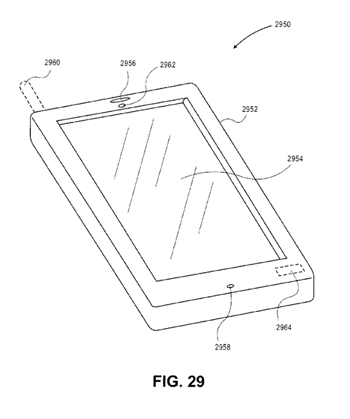 One thing that put Samsung at a serious disadvantage in its patent fight with Apple was the weakness of its own portfolio of relevant patents. Conflicts between companies with roughly comparable portfolios almost always end in a cross-licensing agreement. A fight to the death only makes sense when one company thinks it has a clear advantage.
One thing that put Samsung at a serious disadvantage in its patent fight with Apple was the weakness of its own portfolio of relevant patents. Conflicts between companies with roughly comparable portfolios almost always end in a cross-licensing agreement. A fight to the death only makes sense when one company thinks it has a clear advantage.
A look at Apple’s scroll-and-zoom patent (US 7,844,915), one of the software patents Samsung was found to have infringed, sheds some light on who had clout and who didn’t around the time the patent was filed in early 2007 (it was granted in 2010.) A total of 50 other patents are cited in the application.
Seventeen of these are apparently the work of individual inventors or researchers; they are not assigned to any corporation. Five others are Apple’s own, one going back to 1993. Microsoft accounted for the largest number, 10, including some patents clearly related to the Microsoft Research project that produced the Surface touch table. IBM came in with three and Philips two. The application cited single patents from Autodesk, Cygnus Systems, Design Intelligence, Elan Microelectronics, Ericsson, Hewlett-Packard, Laszlo Systems, Magnifi Group, Nokia, Picsel, Sony, Synaptics, and Tatung.
Who is missing from this list? Samsung, of course. And, Google, including its new Motorola subsidiary. Being there matters.
